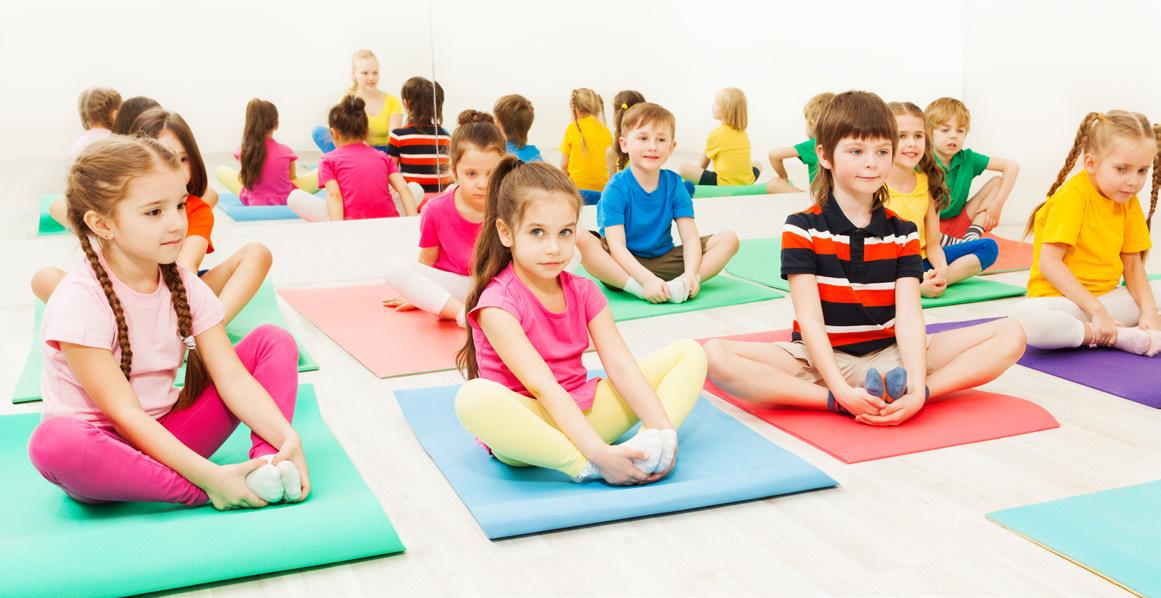
4 minute read
How to Relax Test Stressed
How to Relax TEST-STRESSED Kids
Breathe deep: in with the good air, out with the bad. (And hopefully that high-stakes anxiety will follow, too.)
By: Mary Ellen Flannery
On state testing days, when the stress level in your classroom starts to rise like heat waves from the asphalt in August, it would be not completely shocking—although it would be completely unpleasant—to have a child vomit on his desk. Or collapse in tears. Or fall to pieces in so many other familiar ways.
And we don't want that. So, let's clean up, calm down, and consider how to ease the stress.
EVEN IF WE DON'T WEAR WHITE ROBES, CAN WE STILL FEEL MORE LIKE "DAY SPA" THAN "TEST DAY?"
Absolutely. Many of your colleagues take New Age-y tips from the spa pros. In her ninth-grade science classroom in Heath, Ohio teacher, Jennifer Fowler, burns peppermint-scented candles. (Peppermint is said to stimulate brain activity.) Others distribute sport-size water bottles or turn on "relaxation" tapes with the soothing sounds of raindrops or ocean waves.
What does your yoga teacher tell you? Quiet your mind, perhaps. Let it wander somewhere peaceful. On testing days in Clifton, New Jersey, Donna Weiss takes her seventh- and eighth-graders on just such a journey to contentment. First her students close their eyes, then she asks them to inhale, hold, and release, three times. With their eyes still closed, she narrates a walk on the beach, the sensation of the sun on their shoulders, the wind on their face, the feeling of aloneness—or maybe a hike in the mountains. Then she brings them back to the classroom with three more breaths.
Plus, it might help kids do better on the tests. A study done by the Institute of HeartMath—a non-profit that teaches kids how to "breathe from their hearts" to relax—found that kids with high levels of test anxiety scored 15 points lower, on average, on standardized reading and math tests than their more relaxed peers.
I’LL TELL YOU WHEN MY STUDENTS RELAX: WHEN THEY ACT LIKE CHILDREN! BUT I CAN’T EXACTLY LET THEM ROLL AROUND ON THE FLOOR, CAN I?
Um, we can’t recommend that. But we do recommend that you check out these other tips from colleagues. Many of them reach out to the tense and frightened by channeling the goofy and the child-like—and they’re effective.
What works for 2-year-olds with night terrors also works for kids of all ages scared by testing monsters. Lynn Cashell, a Pennsylvania fourth-grade teacher, keeps a basket of stuffed animals in her classroom. And on big testing days, she allows students to bring in their own lovey.
“It’s a little something that can sit in their laps or sit on their desks, to cuddle with or stroke. I see them talk to it—I’ve seen kids, during the test, push back their chair, hold on to their animal, and take a breather. And that’s fine.”
She encourages students to take off their shoes and relax. “Take off our shoes?” they ask in wonder. They’ll also stretch their limbs, shake their fingers, and shout nonsense words. “I’m doing it with them, of course, just waiting for the principal to come in while we’re doing these ridiculous yells!”
In Connecticut, Denise Cooley tells her middle school students that she’s giving them magic pencils that “only write right answers!” Abracadabra! Stress erased! “They know I’m lying through my teeth, but they sit there and grin.”
And in Ohio, Jennifer Fowler asks her high school scientists to rest between tests with coloring books and crayons. “I once had a huge football player tell me how calm he felt after his chemistry exam because he brought and used (and I’m not kidding) a Holly Hobby coloring book.”
AFTER TELLING KIDS ALL YEAR LONG JUST HOW DARN IMPORTANT THESE TESTS ARE, CAN WE REALLY EXPECT STRESSFREE STUDENTS ON TEST DAY?
No. And that’s why you have to send a different message. Try this one: Testing is just a guidepost. “Come on, guys, you know the material. Relax and do your best,” says Sheri Chu to her sixth-graders in Southern California. Any test shows “what you know, what you don’t know, what you still need to learn.” Focus on the learning, Chu suggests, and do it consistently all year long. Lynn Cashell also tells students that the test is really more about her—has she taught them all they need to know? (Keep the “So please don’t fail” part to yourself!) Denise Cooley says to her Connecticut middle-school students: “This is nothing new. We’ve been doing it all year, so what are you worried about?” And, throughout the year, first-grade teacher Michael Fenner tells his kids that it’s not the smartest students who do best on tests— it’s the ones who pay attention.







